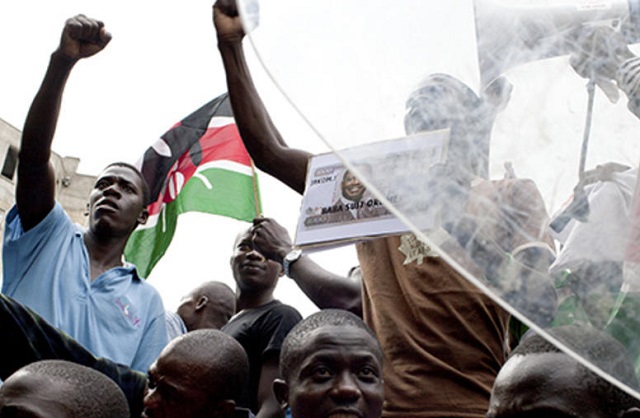
Nakuru, Kenya | AFP | As Kenya’s presidential election looms, many in the country’s Rift Valley feel a deepening dread. It was in this fertile region in western Kenya that ethno-political violence flared in 2007 and continued into the following year after President Mwai Kibaki’s disputed re-election.
About 1,100 people were killed and 600,000 displaced, with the worst violence occurring between the two major ethnic groups in the region, the Kikuyu and the Kalenjin.
Before 2013 elections the two groups struck a political alliance, and President Uhuru Kenyatta, a Kikuyu, is again running alongside his deputy William Ruto, a Kalenjin.
As the August 8 vote draws near, some in the valley hope the alliance will keep the region calm.
But others say the fragile peace could easily collapse.
Seven of the 19 counties listed as hotspots for potential violence by Kenya’s peace-building agency, the National Cohesion and Integration Commission, are in the Rift Valley.
“While major Kikuyu versus Kalenjin conflict is unlikely during elections scheduled for August 2017, serious local violence is possible,” the International Crisis Group (ICG) concluded in a May report.
Though the campaign period has been calm in Nakuru county, residents and rights groups say an undercurrent of tension runs through the region.
Joseph Omondi, a human rights activist in the region, highlights that for Raila Odinga, 72, the main opposition candidate who claimed the 2007 poll was stolen from him, “it’s this election or nothing else.”
“That brings tensions because, in the event that the results are disputed, it can spark violence. That’s what now is creating anxiety,” he added.
– Hate speech –
In the valley, hate-speech flyers with explicit threats against those who vote for certain candidates have been circulating for months.
Human Rights Watch has documented several instances of intimidation between communities in Naivasha, another large town in the valley, where people were beaten, killed and forcibly circumcised — an act of ethnic humiliatiation — during the 2007-8 violence.
Some families have already fled the town, the head of the Anglican diocese Maurice Muhatia told local media.
While insisting “it’s calm, it’s peaceful,” Naivasha reverend Adam Wachira told AFP there was “a sense of anxiety, because of what has happened in the past.”
 The Independent Uganda: You get the Truth we Pay the Price
The Independent Uganda: You get the Truth we Pay the Price



